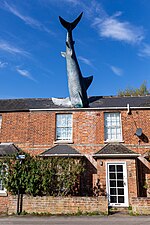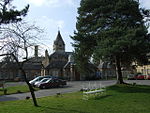Big Data Institute
Big dataCOVID-19 pandemic in EnglandCOVID-19 pandemic stubsDepartments of the University of OxfordMedical research institutes in the United Kingdom ... and 4 more
Organizations with year of establishment missingPopulation genetics organizationsResearch institutes of the University of OxfordUnited Kingdom organisation stubs
The Big Data Institute (BDI), part of the Li Ka Shing Centre for Health Information and Discovery, is an interdisciplinary research institute at the University of Oxford. The institute brings together researchers from both the Nuffield Department of Population Health and the Nuffield Department of Medicine. The BDI building is on the Old Road Campus in Headington, east Oxford, England.Academics from the BDI are advising the British government about a mobile phone app to track the COVID-19 pandemic in the United Kingdom.
Excerpt from the Wikipedia article Big Data Institute (License: CC BY-SA 3.0, Authors).Big Data Institute
Roosevelt Drive, Oxford Headington
Geographical coordinates (GPS) Address External links Nearby Places Show on map
Geographical coordinates (GPS)
| Latitude | Longitude |
|---|---|
| N 51.752869 ° | E -1.214906 ° |
Address
Big Data Institute
Roosevelt Drive
OX3 7LF Oxford, Headington
England, United Kingdom
Open on Google Maps








